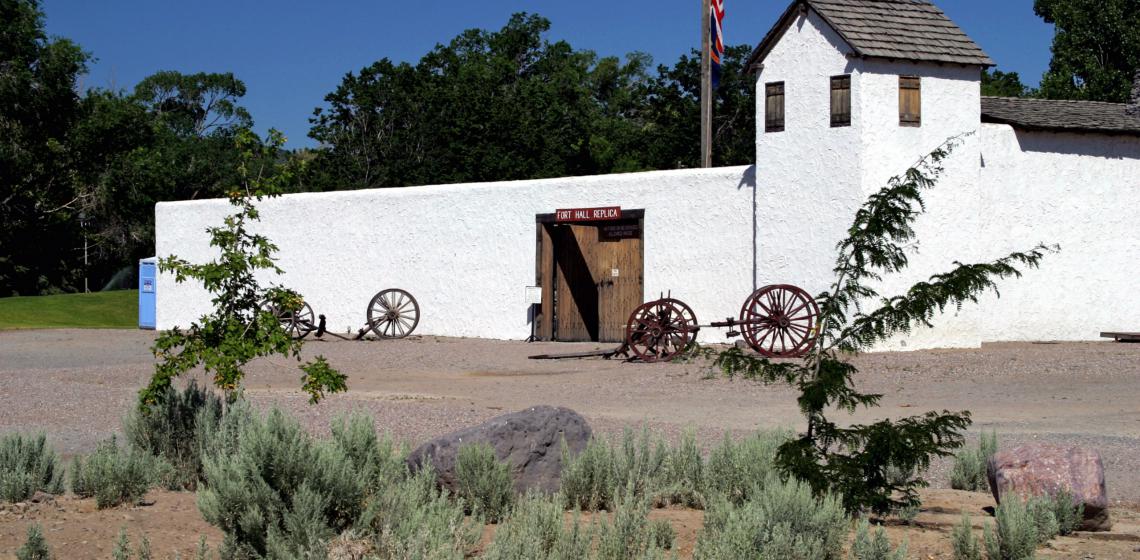
A visit to the Fort Hall Replica is to enter the 19th Century world of explorers, trappers, fur traders, Native Americans, pioneers, Gold seekers, historic figures, and common folk; all of whom visited the place called Fort Hall on the banks of the Snake River in what is now Southeast Idaho.
The area at the Snake River was known for centuries as a favourable fur region. The earliest white men in the region arrived in the years 1810-1812. In 1834, Mr Wyeth from New England founded Fort Hall. Not many years later however, the Hudson Bay Company constructed a rival fort near the junction of Boise River with the Snake. They named the post Fort Boise, its purpose was simply to drive Fort Hall out of business. In 1837 Wyeth sold out to the Hudson's Bay Company. In 1843, the "Great Migration" to the Willamette Valley of Oregon began. A train of about 200 wagons, about 875 emigrants, with hundreds of head of livestock, moved through Fort Hall and finally reached the Dalles on the Columbia River.
Though still occasionally used by independent furs gatherers well into the 1860's, the old fort fell into disrepair. In 1864 the Holladay Stage Lines constructed a stage station a short distance southeast of Fort Hall with much of the material from the old fort.
In 1916, small excavations took place at the original fort location. It was not until 1962 that the Bannock County Centennial Committee decided as their project to celebrate Idaho's 1963 Territorial Centennial to build a Fort Hall Replica. Jack Alvord supervised the work and remained chairman of the Replica Commission until his death in March 1980. Because the original site could not be acquired or built upon, the Replica is located on the upper level of Ross Park, where it is maintained by the Pocatello Parks and Recreation Department. An inventory with dimensions of the fort when it was in the possession of the Hudson's Bay Company served as the basis for this reconstruction.
Text source: forthall.net
Photo source: Visitidaho.org
